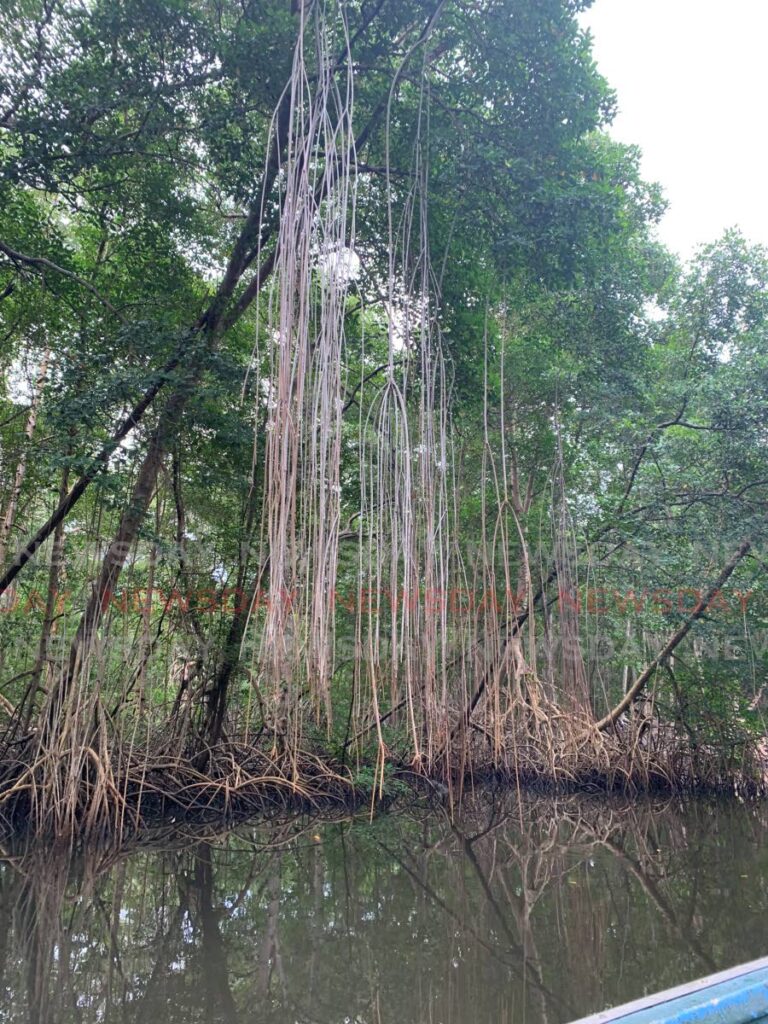The magic of the swamp

An intense feeling of mystery and enchantment steals over you as you enter into the swamp in the early misty morning.
This is the Caroni Swamp. Hundreds of hectares of swampland are a natural habitat for a vast number of communities. Living together in this sweet-salt water zone, are innumerable water loving birds, fish, crabs, oysters, aquatic plants, flowers and mangroves.
Of the red, black and white mangroves found here, red mangroves dominate. A most unusual form of vegetation is the mangrove. Fingerlike roots firmly hold the tree in the soft mud, while aerial shoots take in food from the air and help to spread the growth of the mangrove. The branches and roots of the mangrove provide nesting and feeding grounds for fish and animals specially suited to living in this unique environment.
In the soft mud of the swamp can be found several species of fish and shellfish, including shrimp, mussels, oysters and clams. Crabs are also in abundance, with the fiddler crab being the most fascinating.
The Caroni Swamp is for birds. Look for the jacana, also called the lily pad jumper. Its long legs allow it to jump from lily pad to lily pad, as it makes its way across the water. Cattle egrets, snowy egrets and great egrets stand out white and elegant against the green of the swamp. Egrets roost in colonies and feed on fish and insects. Great flocks of them leave in the morning for feeding grounds at distant points across the island. There is a little blue heron, flying gracefully across the water. And there is a tri-coloured heron, with its grey shoulders and white belly, crest and rump.

The waterways of the swamp criss cross and curve, this way and that, and here in front of us, near the sea, it is pelican country. Pelicans are everywhere, flying high, riding the tops of the mangroves, diving into the water and creating an amazing spectacle, these countless pelicans. Frigate birds, gulls and terns provide incredible aerobatic displays, soaring and diving easily against blue tropic skies.
Don’t go away yet. The best is yet to come. The scarlet ibis are coming home. There they are in the distance, against the vivid blue of the evening skies, bright scarlet, like rolling red clouds. They’re coming closer, flocks of hundreds, adult and young birds circling together, alighting on the mangroves, like instant red ‘blossoms’.
Look! They take to the skies again, in a last joyous dance before settling down for the night. A sight you will see nowhere else but in this magical, mystical Caroni Swamp.
Some easy questions to answer.
Why is it mysterious in the swamp?
What is a community?
Name some unusual things found in a swamp.
How does the jacana use its long legs?
Name two kinds of herons mentioned in the lesson.
Where would you find the crest of a bird?
Name three kinds of mangroves.
When does the scarlet ibis come home to the swamp?
Green Readers by author Julie Morton is a series to teach children about the environment through stories, poems and Q&A exercises.

Comments
"The magic of the swamp"